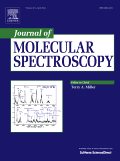
JOURNAL OF MOLECULAR SPECTROSCOPY
Scope & Guideline
Pioneering Insights in Spectroscopy Since 1957
Introduction
Aims and Scopes
- High-Resolution Spectroscopy:
The journal emphasizes high-resolution spectroscopy techniques such as infrared (IR), microwave, and terahertz spectroscopy to study molecular vibrations and rotations, enabling precise characterization of molecular structures. - Computational Methods in Spectroscopy:
A core area of focus includes the application of theoretical and computational methods to predict and interpret spectroscopic data, enhancing the understanding of molecular behavior and interactions. - Spectroscopic Analysis of Complex Systems:
Research often involves the analysis of complex molecular systems, including clusters and van der Waals complexes, to understand their unique spectral features and underlying physical principles. - Intermolecular Interactions and Dynamics:
The journal explores intermolecular interactions and dynamics through spectroscopic methods, providing insights into phenomena such as hydrogen bonding, van der Waals forces, and complex formation. - Innovations in Spectroscopic Techniques:
The publication features advancements in spectroscopic methodologies, including novel experimental setups and data analysis techniques, contributing to the evolution of the field.
Trending and Emerging
- Machine Learning Applications:
The integration of machine learning techniques for predicting spectroscopic properties and analyzing data is on the rise, showcasing how computational advancements are reshaping data interpretation in spectroscopy. - Spectroscopy in Astrophysics:
An increasing number of studies are focusing on the application of molecular spectroscopy to astrophysical phenomena, highlighting the relevance of laboratory studies to understand cosmic molecular processes. - Complex Molecular Systems and Dynamics:
There is a growing trend towards investigating complex molecular systems, including clusters and molecular assemblies, with an emphasis on their dynamic behavior and interactions. - Environmental and Atmospheric Studies:
Research addressing environmental and atmospheric chemistry through spectroscopic techniques is gaining traction, reflecting a broader interest in understanding molecular processes in real-world contexts. - Advanced Spectroscopic Techniques:
The emergence of novel experimental techniques, such as synchrotron-based and cavity ring-down spectroscopy, is prominent, indicating a trend towards more sophisticated methods that enhance measurement sensitivity and resolution.
Declining or Waning
- Traditional Spectroscopy Techniques:
There has been a noticeable decrease in papers focusing solely on traditional spectroscopy techniques without the integration of computational or advanced methodologies, as researchers increasingly seek to combine experimental and theoretical approaches. - Isolated Molecule Studies:
Research centered on isolated molecules has diminished, with a shift towards studying more complex systems and interactions, suggesting a movement towards understanding molecular behavior in more realistic environments. - Static Molecular Structures:
There is a waning interest in studies that focus purely on static molecular structures without considering dynamic processes or interactions, indicating a trend towards more comprehensive studies that incorporate dynamics.
Similar Journals
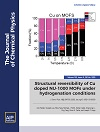
JOURNAL OF CHEMICAL PHYSICS
Exploring the Dynamics of Matter and EnergyJOURNAL OF CHEMICAL PHYSICS, published by AIP Publishing, stands as a premier scholarly source within the realms of physical and theoretical chemistry, as well as physics and astronomy. With an enduring history dating back to 1933 and converging until 2024, this journal has established itself as a cornerstone of the scientific community, evidenced by its prestigious Q1 categorization in multiple fields, including medicine and general physics. It is ranked 37th out of 243 in the general physics and astronomy category and holds a commendable 39th position in physical and theoretical chemistry according to Scopus rankings, highlighting its significant impact in these disciplines. Although not an open-access journal, it caters to a wide audience of researchers, professionals, and students seeking to deepen their understanding of the interactions and dynamics of chemical systems. With its expertly curated content, the JOURNAL OF CHEMICAL PHYSICS continues to play a vital role in advancing knowledge and fostering innovation across its core subjects.
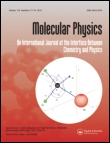
MOLECULAR PHYSICS
Shedding light on the complexities of molecular systems.MOLECULAR PHYSICS, published by Taylor & Francis Ltd, is a distinguished international journal that has been advancing the fields of biophysics, condensed matter physics, molecular biology, and physical and theoretical chemistry since its inception in 1958. With an ISSN of 0026-8976 and an E-ISSN of 1362-3028, the journal provides a rich platform for the dissemination of high-quality research, evidenced by its Q3 ranking in several domains including both biophysics and condensed matter physics as of 2023. Although the journal operates on a traditional subscription model rather than an Open Access basis, its rigorous selection process ensures the publication of relevant and impactful articles. The journal's continued convergence of research until 2024 underlines its ongoing significance and adaptability in an ever-evolving scientific landscape. For researchers, professionals, and students alike, MOLECULAR PHYSICS serves as an essential resource for keeping abreast of the latest developments, fostering collaboration, and inspiring future advancements in molecular theory and applications.
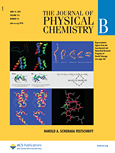
JOURNAL OF PHYSICAL CHEMISTRY B
Illuminating the Path of Materials ChemistryJournal of Physical Chemistry B, published by the American Chemical Society, is a leading international platform dedicated to advancing our understanding of physical chemistry and its applications in various interdisciplinary fields. With an impressive 2023 Impact Factor, and categorized in Q1 for Physical and Theoretical Chemistry as well as Surfaces, Coatings and Films, this journal showcases cutting-edge research that contributes significantly to materials science, supporting the innovative development of new materials and technologies. The journal, established in 1997 and converging its years of publication to 2024, maintains rigorous peer-review standards and is accessible to a global audience, enabling the dissemination of pivotal research findings. Moreover, it is renowned for its comprehensive coverage in the realms of materials chemistry and miscellaneous medical applications, making it a vital resource for researchers, professionals, and students alike in their pursuit of excellence in scientific inquiry.

INTERNATIONAL REVIEWS IN PHYSICAL CHEMISTRY
Navigating the Complexities of Physical ChemistryInternational Reviews in Physical Chemistry, published by Taylor & Francis Ltd, is a leading journal dedicated to the advancement of knowledge in the field of physical and theoretical chemistry. With an impressive Scopus Rank of 13 out of 189 in its category and a Q2 quartile ranking in 2023, this journal provides a vital platform for researchers, professionals, and students to disseminate and engage with groundbreaking research findings. Since its inception, covering a converged period from 1981 to 2023, the journal has consistently offered comprehensive reviews and original research articles that address crucial advances and contemporary debates in physical chemistry. While not an open-access journal, it maintains accessibility through its robust publication standards and esteemed editorial board. Given its impact and relevance, International Reviews in Physical Chemistry is indispensable for anyone involved in the chemical sciences, facilitating a deeper understanding of complex physical principles and their applications.
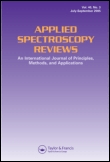
APPLIED SPECTROSCOPY REVIEWS
Pioneering Reviews for Spectroscopy InnovatorsAPPLIED SPECTROSCOPY REVIEWS, published by Taylor & Francis Inc, is a premier journal in the field of spectroscopy and instrumentation, housed in the United States. With an impressive 2023 impact factor reflecting its esteemed presence, this journal stands out in both the Physics and Astronomy (Rank #5/141, Percentile 96th) and Chemistry (Rank #6/76, Percentile 92nd) disciplines. Spanning over five decades since its inception in 1967, the journal has made significant contributions to the understanding of spectroscopy applications across a wide array of scientific fields. With a focus on publishing high-quality reviews that summarize and synthesize advances in the field, APPLIED SPECTROSCOPY REVIEWS aims to serve as a vital resource for researchers, professionals, and students alike. This journal, classified in the top quartile (Q1) for both its categories in 2023, underscores its integral role in advancing knowledge and innovation in the spectroscopy community. Though not open access, it remains an essential read for those seeking comprehensive insights and developments within the realm of applied spectroscopy.

Surface Science Spectra
Unveiling Innovations in Surfaces and InterfacesSurface Science Spectra is a critically acclaimed journal published by AIP Publishing, serving as an essential resource in the fields of Condensed Matter Physics, Surfaces and Interfaces, and Surfaces, Coatings and Films. With an ISSN of 1055-5269 and an E-ISSN of 1520-8575, this peer-reviewed journal provides a platform for sharing innovative research and groundbreaking findings, contributing to a deeper understanding of surface phenomena and their applications. While the journal operates under a traditional subscription model, its impact is recognized in its 2023 rankings where it holds a Q3 category in both Condensed Matter Physics and Surfaces and Interfaces, and a Q2 category in Surfaces, Coatings and Films. The journal has been publishing since 1992 and continues to attract contributions from leading researchers worldwide. With an emphasis on high-quality research articles, Surface Science Spectra is committed to advancing knowledge in material science and engineering, making it an indispensable reference for scholars, industry professionals, and students alike.

Journal of Spectroscopy
Unveiling New Dimensions in Analytical ChemistryJournal of Spectroscopy, published by HINDAWI LTD since 2009, is a renowned Open Access journal based in Egypt that serves as a valuable platform for the dissemination of cutting-edge research in the fields of analytical chemistry, atomic and molecular physics, and optics. With the unique ISSN 2314-4920 and E-ISSN 2314-4939, this journal aims to facilitate collaboration and knowledge exchange among researchers, professionals, and students by providing unrestricted access to essential findings and advancements. As of 2023, it holds a Q3 ranking in both Analytical Chemistry and Atomic and Molecular Physics, and a Q4 ranking in Spectroscopy, indicating its growing influence and relevance within the academic community. The journal also maintains a Scopus rank of #126 in Atomic and Molecular Physics and #53 in Spectroscopy, showcasing its commitment to high-quality scholarly content. With a converged timeline from 2013 to 2024, the Journal of Spectroscopy is positioned as a pivotal resource for the latest discoveries and innovative applications in spectroscopy-related studies.
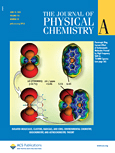
JOURNAL OF PHYSICAL CHEMISTRY A
Elevating knowledge in the realm of molecular phenomena.Journal of Physical Chemistry A, published by the American Chemical Society, serves as a leading platform for disseminating high-quality research in the fields of physical and theoretical chemistry. With an ISSN of 1089-5639 and E-ISSN of 1520-5215, this journal maintains a rigorous standard, demonstrated by its position in the Q2 category for both physical and theoretical chemistry as well as miscellaneous medicine within its 2023 category quartiles. As part of the greater ACS network, it operates with a solid Scopus rank of 76/189, placing it within the 60th percentile, emphasizing its credibility and impact in the chemistry community. The journal's objective is to enhance the understanding of molecular phenomena through innovative experimental and computational approaches, making it essential reading for researchers, professionals, and students seeking to advance their knowledge and contribute to scientific discussion. With additional open access options, the Journal of Physical Chemistry A continues to foster collaboration and the sharing of ideas in the vibrant scientific landscape of the United States and beyond.
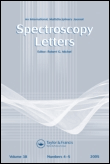
SPECTROSCOPY LETTERS
Your Gateway to Cutting-Edge Spectroscopy ResearchSPECTROSCOPY LETTERS, published by Taylor & Francis Inc, is a pivotal journal that plays a significant role in the fields of Analytical Chemistry, Atomic and Molecular Physics, and Optics. With an ISSN of 0038-7010 and E-ISSN of 1532-2289, it provides a platform for the dissemination of cutting-edge research and developments in spectroscopy and its wide-ranging applications. As of 2023, the journal is ranked in the third quartile (Q3) across its relevant categories, reflecting its importance in these scientific domains. The journal has a continuous publication history from 1968 to 2024, establishing a rich legacy in academic literature. Although it currently does not offer Open Access options, SPECTROSCOPY LETTERS remains a valuable resource for researchers, professionals, and students seeking to advance their knowledge and applications in spectroscopy. For those in the arena of physics and chemistry, this journal is essential for keeping abreast of the latest findings and methodologies in the field.
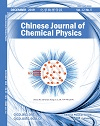
CHINESE JOURNAL OF CHEMICAL PHYSICS
Unveiling Breakthroughs in Chemical Physics ResearchChinese Journal of Chemical Physics, published by the Chinese Physical Society, serves as a pivotal platform for advancing the field of chemical physics, encompassing groundbreaking research and innovative methodologies since its inception in 2000. With an ISSN of 1674-0068 and E-ISSN of 2327-2244, the journal has established itself within the academic community, reflected in its 2023 classification as Q3 in Physical and Theoretical Chemistry and a Scopus rank of #142 out of 189, representing the 25th percentile in this competitive field. Although it does not currently operate as an open-access publication, its commitment to disseminating pivotal scientific research continues to attract scholars and professionals alike. The journal aims to bridge the gap between theoretical principles and practical applications in chemical physics, thereby fostering collaboration and innovation. By contributing significantly to the discourse in this dynamic domain, the Chinese Journal of Chemical Physics remains an essential resource for researchers, professionals, and students eager to stay abreast of contemporary developments.